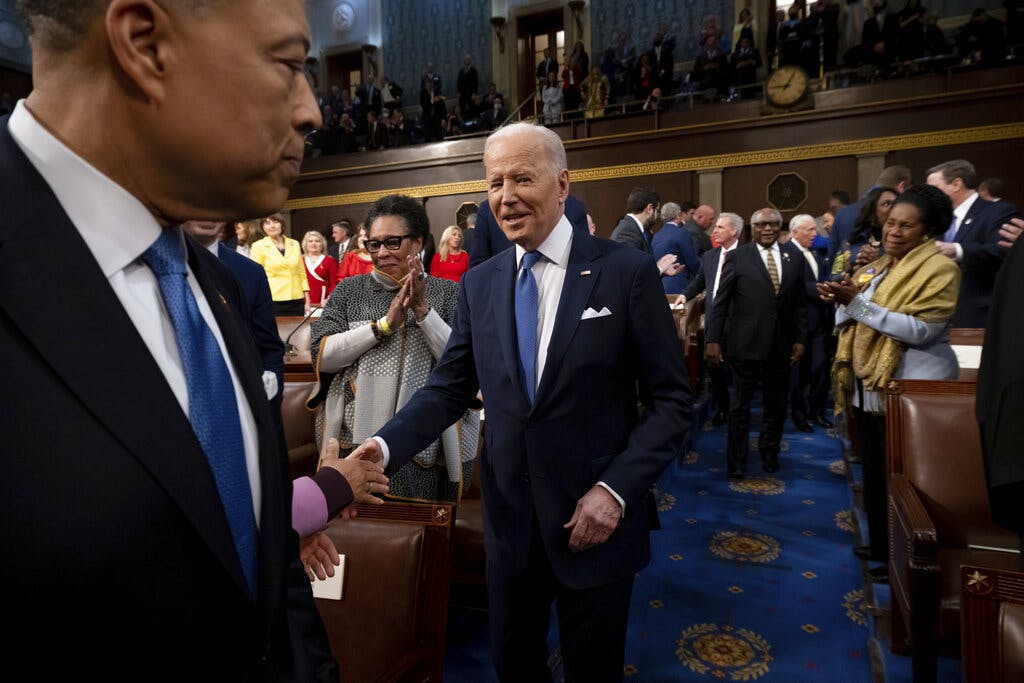More Student Loan Forgiveness Seen Even as Economy Hums
Biden has been under intense pressure from the progressive wing of his party to forgive at least part of the more than $1.6 trillion in outstanding student loans.

Despite an overheated economy and one of the tightest labor markets on record, the Biden administration is hinting that it may extend yet again the moratorium on student loan payments initiated at the start of the Covid-19 pandemic in March 2020.
Officials with the Department of Education have told companies that manage the federally subsidized student loan portfolios to hold off on sending out notices that payments are to resume as planned in May, according to a Politico report.
Officials at the Department of Education had no comment on the report, saying only that it will continue communicating with borrowers about student loan repayments “with clear and timely updates.”
Any extension is likely to be met with stiff criticism from budget hawks in Congress and conservative groups that have argued it’s time for student loan borrowers to start honoring their pledges and begin repaying the loans again.
In a letter to the education secretary released Tuesday, a dozen conservative organizations decried the moratorium as an unfair transfer of wealth that is costing taxpayers as much as $4 billion a month — $100 billion since it was first initiated — at a time of ballooning federal budget deficits.
“A moratorium on student loan payments is unfair to blue-collared Americans who did not rack up tens of thousands of dollars of debt and those who proactively paid off their debt,” the signatories of the letter, among them Americans for Taxpayer Reform and the National Taxpayers Union, said.
President Biden has been under intense pressure from the progressive wing of his party to deliver on a campaign pledge to forgive at least part of the more than $1.6 trillion in outstanding student loans. Many have pressured him to sidestep Congress and cancel the debt via executive order, an idea he has so far resisted.
The moratorium, which pauses both payments and the accrual of interest on loans held by some 40 million Americans, was initiated by President Trump in March 2020 at the beginning of the coronavirus pandemic. Citing widespread economic hardship, he later extended it through January 2021.
Mr. Biden has extended the relief three times now, most recently in December 2021. At the time, administration officials hinted it would be the last time the moratorium is extended, but Wednesday’s report indicates that officials may be having second thoughts.
In a statement in December, Secretary Cardona said the extension was needed in order to “provide critical relief to borrowers who continue to face financial hardships as a result of the pandemic, and will allow our administration to assess the impacts of omicron on student borrowers.”
Since then, however, the omicron virus has faded and the economy is strong enough for the Federal Reserve to suggest that interest rate increases may be coming as soon as next week in order to slow it down.
The Bureau of Labor statistics reported Wednesday that there were 11.3 million job openings in January, a number that is well above pre-pandemic levels. The data suggest that there are nearly two openings for every jobless American at the moment.
The same report said 4.3 million Americans quit or changed their jobs in January — also a record, and another sign of just how tight the labor market is at the moment.
A 2021 report by the liberal-leaning Brookings Institute concluded that widespread student loan forgiveness would amount to the largest transfer programs in American history, costing as much as $1.6 trillion if up to $50,000 per borrower were erased as some Democratic lawmakers have proposed. Mr. Biden’s proposal to limit the amount forgiven to $10,000 per borrower would cost $373 billion.
The Brookings report said forgiving all outstanding student loans would cost as much as the U.S. government has spent on all anti-poverty programs over the last several decades, and that the primary beneficiaries of such a transfer would be higher-income, better-educated, and whiter than the beneficiaries of other anti-poverty programs.

